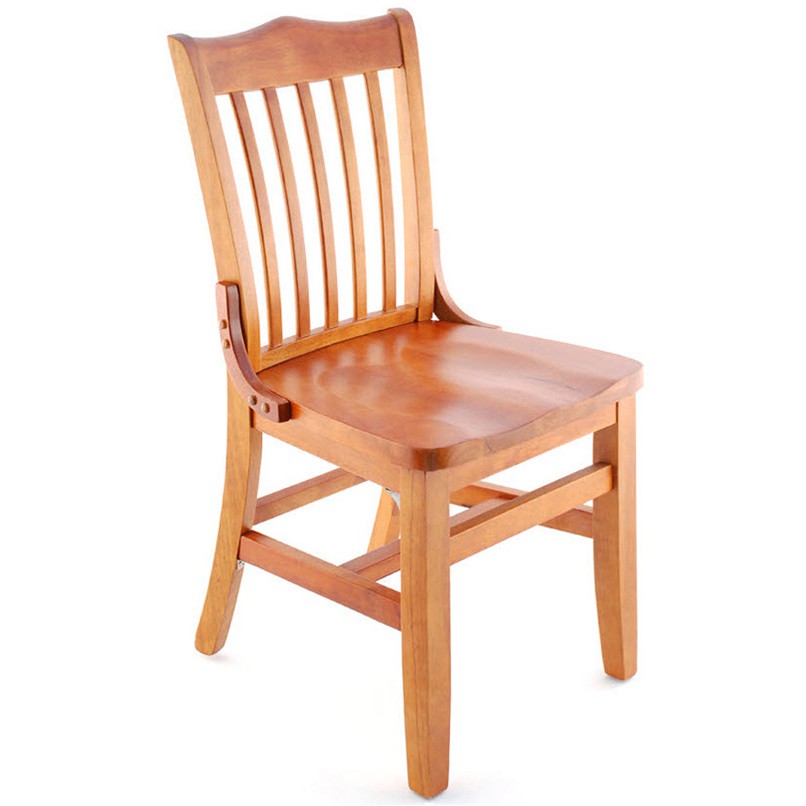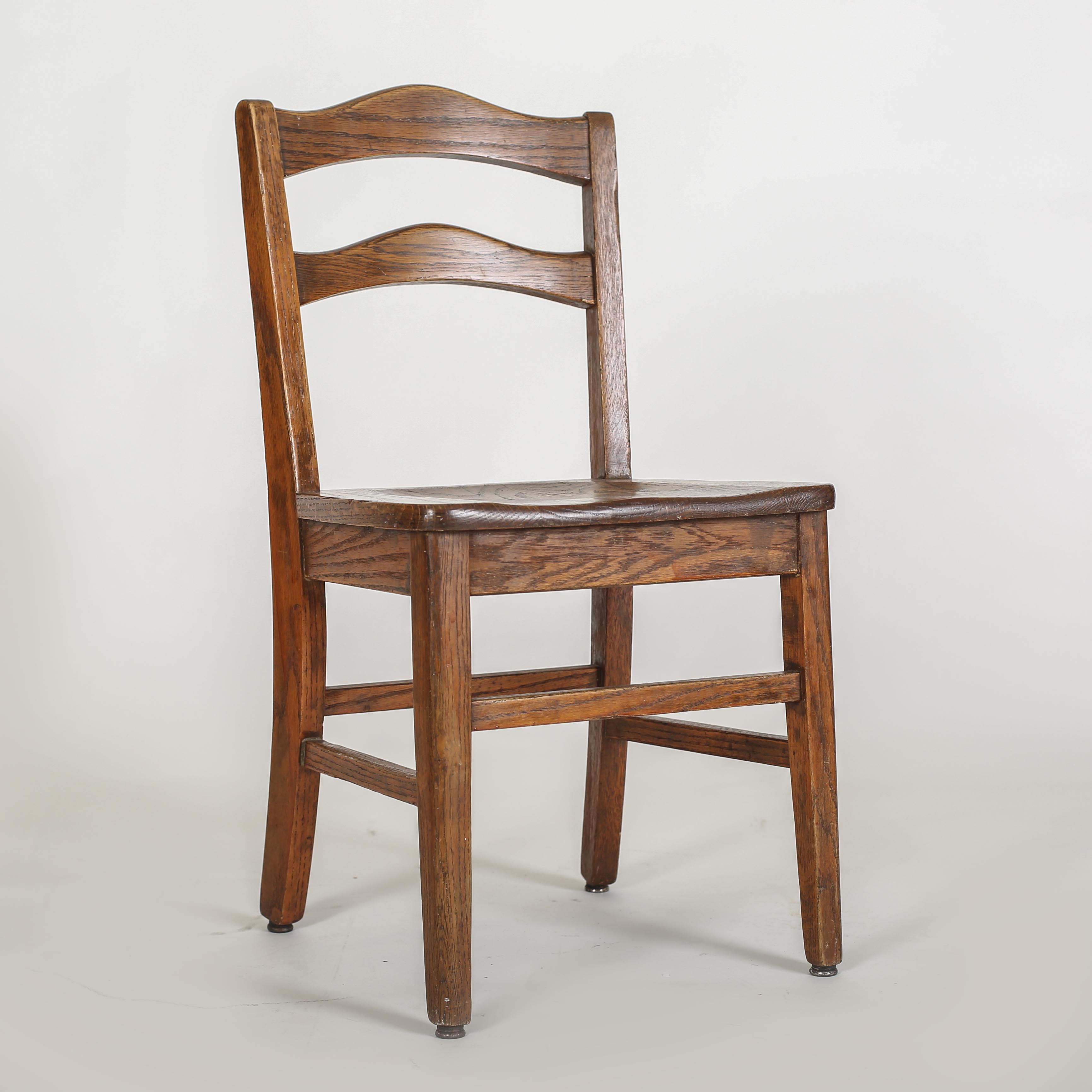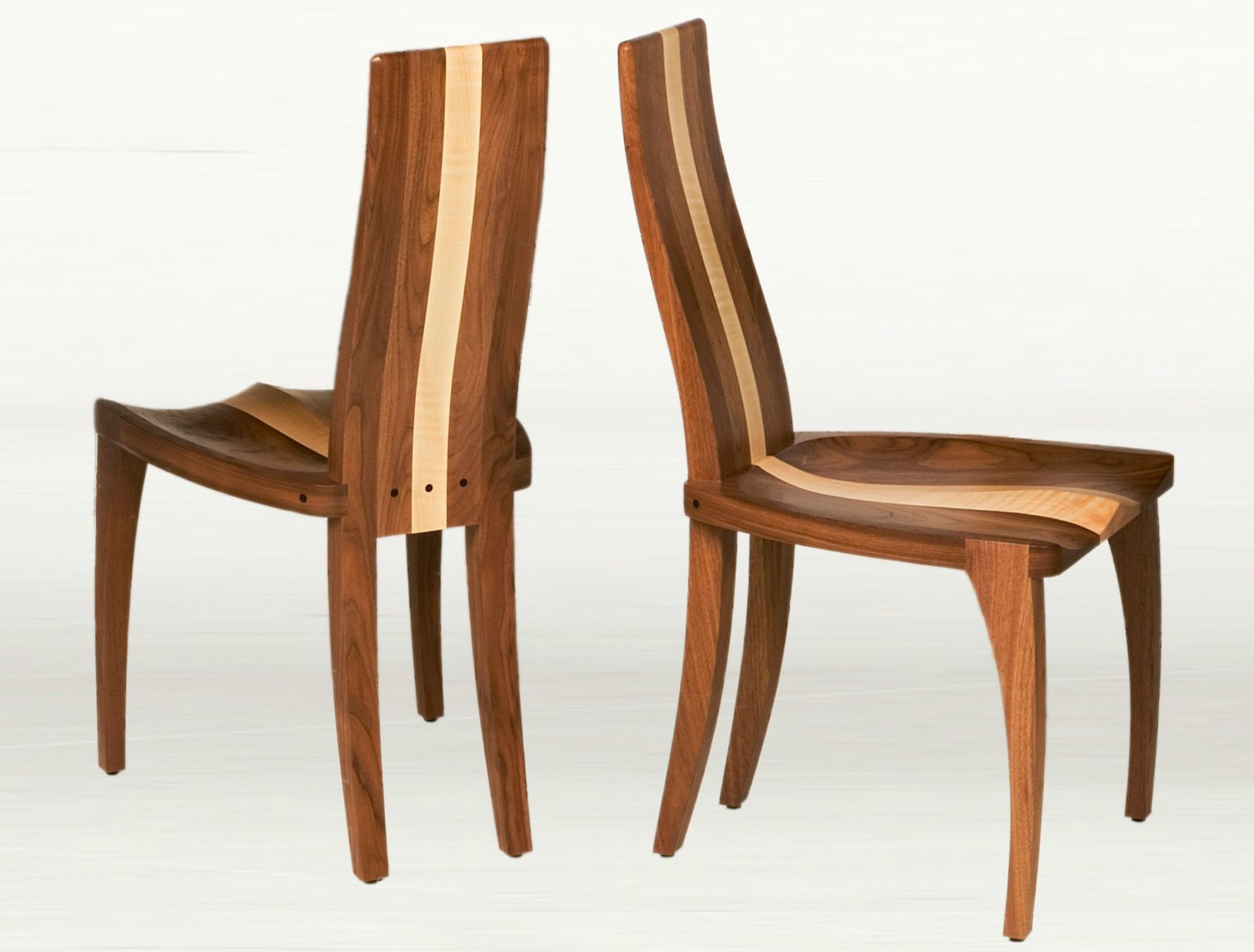The History and Evolution of Wooden Chairs: This Chair Is Made Of Wood

The humble wooden chair, a seemingly simple piece of furniture, boasts a rich and fascinating history, reflecting the evolution of human culture, design, and craftsmanship. From its earliest iterations as rudimentary stools to the intricate masterpieces of today, the wooden chair has undergone a remarkable transformation, adapting to changing needs, styles, and technologies.
Early Forms and Origins
The origins of wooden chairs can be traced back to ancient civilizations, with different cultures developing their own unique forms and styles. In ancient Egypt, chairs were primarily used by royalty and the elite, often crafted from precious woods and adorned with intricate carvings. Examples include the “throne chairs” with high backs and elaborate armrests, symbolizing power and status. Ancient Greece and Rome also produced chairs, but their designs were more functional and often foldable, reflecting the nomadic lifestyles of the time.
Medieval and Renaissance Chairs
During the Middle Ages, chairs continued to be primarily associated with the wealthy and powerful. Gothic chairs, characterized by their tall, pointed backs and elaborate carvings, became popular among European nobility. The Renaissance period witnessed a renewed interest in classical art and architecture, influencing chair design. Chairs from this era often featured ornate details, including upholstery and decorative elements inspired by ancient Roman and Greek motifs.
The Evolution of Styles
The 17th and 18th centuries saw a proliferation of chair styles, reflecting the changing tastes and social structures of the time. The Baroque period favored grand and elaborate chairs with curves, ornamentation, and rich fabrics. The Rococo era emphasized lightness, elegance, and asymmetry, with chairs featuring delicate curves, shells, and floral motifs. The Neoclassical style, which emerged in the late 18th century, emphasized simplicity, symmetry, and classical forms.
The Industrial Revolution and Beyond
The Industrial Revolution brought about significant changes in chair production, with the introduction of mass production and new materials. The invention of the steam engine and the development of woodworking machinery allowed for the efficient and economical production of chairs. New materials, such as metal and plastic, began to be used in chair construction, offering greater durability and affordability.
The Impact of Wood Types and Carving Techniques
The choice of wood type has always played a significant role in chair design, influencing both the aesthetic and structural properties of the finished piece. Hardwoods, such as oak, walnut, and mahogany, are known for their strength, durability, and rich grain patterns, making them ideal for furniture. Softer woods, such as pine and cedar, are more affordable and often used for less demanding applications.
Carving techniques have also been integral to chair design, allowing for the creation of intricate details and decorative elements. From simple geometric patterns to elaborate floral motifs, carvings have been used to enhance the beauty and value of wooden chairs. Skilled woodcarvers have played a vital role in shaping the aesthetics and cultural significance of chairs throughout history.
The Properties and Benefits of Wood in Chair Making

Wood, a natural and versatile material, has been a mainstay in furniture making for centuries, and chairs are no exception. The inherent properties of wood make it an ideal choice for chair construction, offering a unique blend of strength, durability, and aesthetic appeal.
Physical and Mechanical Properties of Wood
Wood possesses a unique combination of physical and mechanical properties that make it suitable for chair making. These properties are determined by the type of wood, its growth conditions, and the way it is processed.
- Strength: Wood is a strong material, capable of bearing significant weight. The strength of wood varies depending on the species, with hardwoods generally being stronger than softwoods. This strength is crucial for chairs to withstand the stresses of daily use.
- Flexibility: Wood is also a flexible material, allowing it to bend and adapt to different shapes. This flexibility is essential for creating curved chair backs and seats, adding comfort and ergonomic design.
- Durability: Wood is a durable material, capable of lasting for generations with proper care and maintenance. This durability is due to the natural resistance of wood to decay and pests.
- Workability: Wood is easy to work with, allowing for precise cuts, shaping, and finishing. This workability makes it possible to create intricate designs and details that add to the beauty and functionality of chairs.
Selection of Wood Species for Chair Making, This chair is made of wood
The choice of wood species for chair making depends on a combination of factors, including strength, durability, aesthetic qualities, and availability.
- Hardwoods: Hardwoods are known for their strength, durability, and rich grain patterns. Common hardwoods used for chair making include oak, maple, cherry, walnut, and mahogany.
- Oak: Oak is a strong and durable hardwood with a distinctive grain pattern. It is often used for traditional chairs, tables, and other furniture pieces. Oak is known for its resistance to wear and tear, making it a popular choice for high-traffic areas.
- Maple: Maple is another strong and durable hardwood with a beautiful grain pattern. It is often used for chairs that require a smooth, polished finish. Maple is also known for its resistance to scratches and dents, making it a good choice for dining chairs.
- Cherry: Cherry is a hardwood with a warm, reddish-brown color and a distinctive grain pattern. It is often used for chairs that require a sophisticated and elegant look. Cherry is known for its durability and resistance to moisture, making it a good choice for chairs that will be exposed to the elements.
- Walnut: Walnut is a hardwood with a rich, dark brown color and a distinctive grain pattern. It is often used for chairs that require a luxurious and elegant look. Walnut is known for its durability and resistance to moisture, making it a good choice for chairs that will be exposed to the elements.
- Mahogany: Mahogany is a hardwood with a reddish-brown color and a distinctive grain pattern. It is often used for chairs that require a luxurious and elegant look. Mahogany is known for its durability and resistance to moisture, making it a good choice for chairs that will be exposed to the elements.
- Softwoods: Softwoods are generally lighter and less durable than hardwoods, but they are also more affordable. Common softwoods used for chair making include pine, fir, and cedar.
- Pine: Pine is a softwood with a light, yellowish color and a distinctive grain pattern. It is often used for chairs that require a rustic or casual look. Pine is known for its affordability and ease of workability, making it a popular choice for budget-conscious furniture makers.
- Fir: Fir is a softwood with a light, yellowish color and a straight grain pattern. It is often used for chairs that require a clean, simple look. Fir is known for its durability and resistance to moisture, making it a good choice for outdoor chairs.
- Cedar: Cedar is a softwood with a reddish-brown color and a distinctive aromatic scent. It is often used for chairs that require a natural and rustic look. Cedar is known for its durability and resistance to insects, making it a good choice for outdoor chairs.
Advantages of Using Wood for Chairs
Wood offers several advantages over other materials used for chair making, such as metal and plastic.
- Natural and Sustainable: Wood is a natural and renewable resource, making it an environmentally friendly choice for furniture making. Sustainable forestry practices ensure that wood resources are managed responsibly.
- Aesthetic Appeal: Wood has a natural beauty and warmth that cannot be replicated by other materials. The unique grain patterns, colors, and textures of different wood species add character and charm to chairs.
- Comfort: Wood chairs offer a level of comfort that is unmatched by other materials. The natural properties of wood allow for a more comfortable seating experience, with a natural give and support that conforms to the body.
- Durability and Longevity: Wood chairs are known for their durability and longevity. With proper care and maintenance, they can last for generations, becoming treasured heirlooms.
- Versatility: Wood is a versatile material that can be used to create a wide range of chair styles, from traditional to modern. This versatility allows for the creation of chairs that complement any décor.
Comparison of Common Wood Species for Chairs
| Wood Species | Hardness | Grain Pattern | Suitability for Chair Styles |
|---|---|---|---|
| Oak | Hard | Prominent, distinctive | Traditional, rustic, contemporary |
| Maple | Hard | Fine, even | Modern, contemporary, traditional |
| Cherry | Hard | Distinctive, swirling | Traditional, elegant, contemporary |
| Walnut | Hard | Striking, contrasting | Modern, contemporary, traditional |
| Mahogany | Hard | Striking, contrasting | Traditional, elegant, contemporary |
| Pine | Soft | Distinctive, knobby | Rustic, casual, farmhouse |
| Fir | Soft | Straight, even | Modern, contemporary, minimalist |
| Cedar | Soft | Distinctive, aromatic | Rustic, outdoor, casual |
The Craft of Wooden Chair Making

Crafting a wooden chair is a time-honored tradition that blends artistry and skill. From selecting the right wood to applying the final finishing touches, each step in the process demands precision and care. This section delves into the intricate world of wooden chair making, exploring the techniques, tools, and craftsmanship involved in transforming raw materials into a functional and beautiful piece of furniture.
The Stages of Wooden Chair Making
The journey of a wooden chair begins with the selection of suitable wood. Different types of wood possess unique characteristics that influence the chair’s strength, durability, and aesthetic appeal. Once the wood is chosen, it is carefully prepared for shaping and joining. The following steps Artikel the key stages in the process:
- Wood Selection and Preparation: The type of wood chosen for a chair depends on its intended use and aesthetic preferences. Hardwoods like oak, maple, and walnut are known for their strength and durability, making them ideal for chairs that will endure heavy use. Softwoods like pine and cedar are lighter and easier to work with, often preferred for chairs with intricate designs. Once the wood is chosen, it is seasoned and planed to remove any imperfections or moisture. This ensures that the wood is stable and ready for shaping.
- Cutting and Shaping: The prepared wood is then cut into the desired lengths and shapes using saws, chisels, and planers. This stage involves creating the basic components of the chair, such as the legs, seat, back, and arms. The specific dimensions and angles of these components determine the chair’s overall form and functionality.
- Joining Techniques: Various techniques are employed to join the different components of the chair. These techniques ensure that the chair is sturdy and durable. Common joining methods include:
- Mortise and Tenon: This traditional technique involves creating a rectangular hole (mortise) in one piece of wood and a corresponding projection (tenon) on another piece. The tenon is then inserted into the mortise, creating a strong and secure joint.
- Dovetail Joint: A dovetail joint is a strong and decorative joint that is often used to join the sides of drawers or the legs of a chair to the seat frame. It involves cutting interlocking wedges (dovetails) on the ends of the pieces to be joined.
- Gluing: Glue is used to bond different pieces of wood together. Wood glue is a strong adhesive that forms a permanent bond between the pieces.
- Screws and Nails: Screws and nails can be used to secure the chair’s components together. They are often used in conjunction with other joining techniques to reinforce the joints.
- Finishing: Once the chair is assembled, it is ready for finishing. The finishing process involves sanding, staining, and varnishing the wood to enhance its appearance and protect it from wear and tear. The type of finish used depends on the desired aesthetic and the intended use of the chair.
Woodworking Techniques and Tools
The craft of wooden chair making relies on a variety of woodworking techniques and tools. Each tool plays a specific role in shaping, joining, and finishing the chair. Here are some common techniques and tools:
- Sawing: Saws are used to cut wood into desired lengths and shapes. Common types of saws used in chair making include:
- Hand Saw: A hand saw is a basic tool used for cutting wood along a straight line.
- Crosscut Saw: A crosscut saw is used to cut wood across the grain.
- Rip Saw: A rip saw is used to cut wood along the grain.
- Circular Saw: A circular saw is a power tool that uses a rotating blade to cut wood. It is used for making straight cuts, ripping wood, and cutting curves.
- Jigsaw: A jigsaw is a power tool that uses a reciprocating blade to cut wood. It is used for cutting curves and intricate shapes.
- Shaping: Once the wood is cut to the desired length, it is shaped using chisels, planers, and other tools.
- Joining: As mentioned earlier, various joining techniques are used to connect the chair’s components. These techniques require specialized tools, such as:
- Chisels: Chisels are used to create mortises and tenons, as well as to shape and refine the wood.
- Router: A router is a power tool that uses a rotating bit to cut grooves, edges, and shapes into wood. It is used to create mortises, tenons, and other joints.
- Clamps: Clamps are used to hold pieces of wood together while they are being glued or joined.
- Finishing: The finishing process involves sanding, staining, and varnishing the wood. Tools used in finishing include:
- Sandpaper: Sandpaper is used to smooth the surface of the wood and remove any imperfections.
- Sander: A sander is a power tool that uses sandpaper to smooth the surface of the wood.
- Brushes: Brushes are used to apply stains and varnishes to the wood.
- Spray Gun: A spray gun is a tool used to apply stains and varnishes evenly to the wood.
This chair is made of wood, its sturdy frame whispering tales of craftsmanship and time. Imagine a big round wooden chair , its wide, welcoming seat inviting you to rest and reflect. The wood, seasoned and smooth, speaks of resilience, of enduring through the years, just like this chair, a testament to the beauty and strength found in nature’s gifts.
This chair, crafted from sturdy wood, stands as a testament to timeless craftsmanship. Yet, the very strength of its foundation requires careful consideration, especially when placed upon a delicate wood floor. To safeguard the surface from the wear and tear of rolling casters, a protective mat is essential.
Choosing the right mat to protect your wood floor from rolling chairs is a wise investment, ensuring that the chair’s grace complements the floor’s beauty for years to come.
